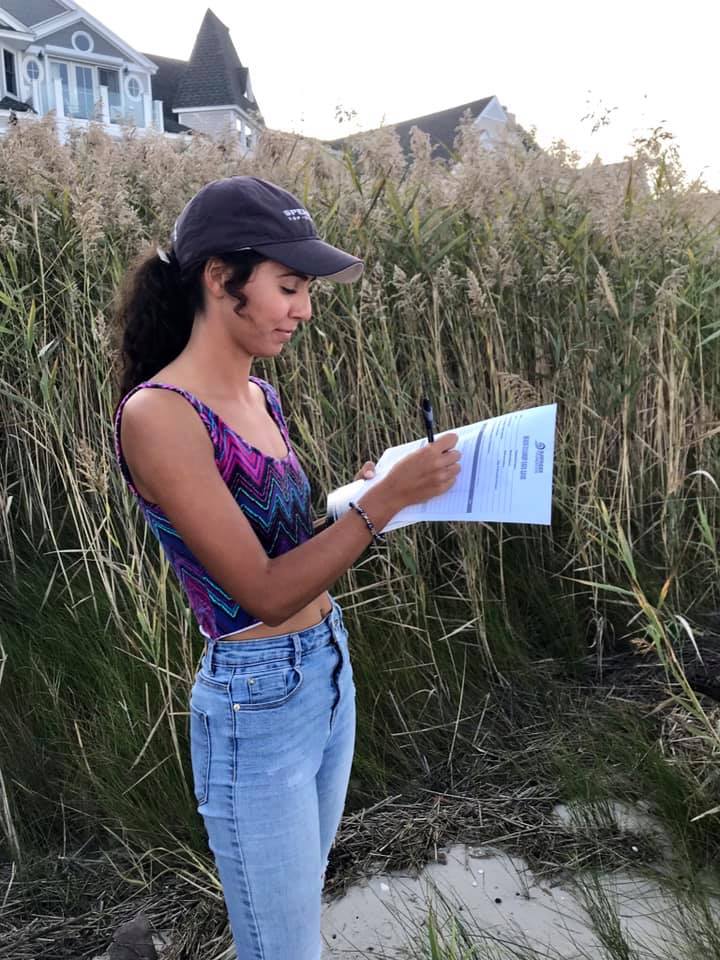

Surfrider is now allowing and encouraging solo cleanups! How to do a Solo Cleanup:
What defines a solo cleanup?
A solo cleanup is defined as an individual cleanup by one person or household unit, not necessarily organized by the chapter, but promoted as an activity for the public. It can take place in your neighborhood, along a street, park, inland waterway or beach, etc. Help us collect data from your cleanup! If it takes place along a waterway or in a park, please also give us the name of the town when you give us your GPS coordinates on the data card. This will help us verify the pin that will be added to display your cleanup on the cleanups database map (very cool!). You can do this by:
- Downloading and printing the data card (below)
- Calculate a total weight. You can weigh your collection bag or any large item with you on a scale and then subtract your weight.
- Drop a Pin using an app such as Google Maps, and then click on the Pin to get your latitude and longitude GPS coordinates (XX.XXXXXXX, -XX.XXXXXXX)
- When your data card is completed, scan or take a picture of it and send to Carol at volunteercoordinator@southjersey.surfrider.org
If you post on social media, tag us in your pics! @surfrider.southjersey ...This spreads and raises awareness, and you may see your pics featured in our feed!!
TIPS: Use your pics to help you tally. If you're doing solo cleanups at the same location regularly, you can tally your results on one card over time and submit your data card periodically.
Cleanup Data Card (download here)
If you feel comfortable handling PPE, please read below for guidelines on handling and discarding PPE and help us track COVID-19 Priority Items. PPE items are listed on the data card to be tracked.
Please read the full guidelines on the Surfrider Foundation coastal blog before heading out. Some general guidance is listed below:
- Select a location where you can maintain a minimum physical distance of 6 feet. Avoid crowded areas at crowded times.
- Wear a mask or cloth face covering when in public per CDC recommendations.
- Refrain from touching your face or public surfaces during the cleanup.
- Wear gloves. We cannot stress this safety precaution enough. Viruses can live on hard surfaces, and individuals should exercise extreme caution when collecting litter. Wearing gloves discourages you from touching your face or face covering. If using reusable gloves, be sure to properly sanitize between uses.
- Grabbers are a good way to minimize contact between your gloves and trash items.
- PPE: Improperly discarded Personal Protective Equipment such as gloves, masks, disinfectant wipes, or other medical waste should be handled and properly discarded following very strict protocol. It’s important that all PPE items collected are properly disposed of following CDC and EPA guidance. If you feel comfortable handling such items, use grabbers and place the PPE items in the receptacle separate from recyclables collected. Used PPE should be tightly sealed in a trash bag and discarded in a lined and secure trash receptacle. PPE items should not be recycled due to possible contamination.
- Remember to properly disinfect all reusable equipment before and after the cleanup using an EPA-approved product for use against SARS-CoV-2, the virus that causes COVID-19.
- Remember to use hand sanitizer after the cleanup is over, then wash your hands with soap and hot water for 20 seconds as soon as you’re able to do so.

